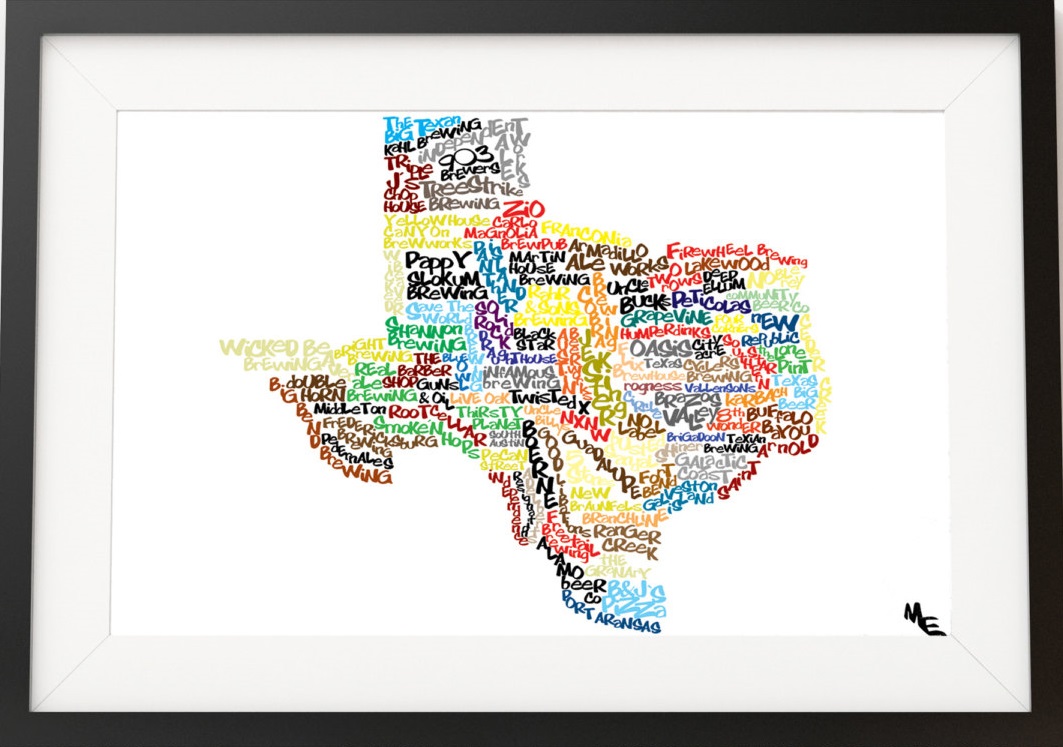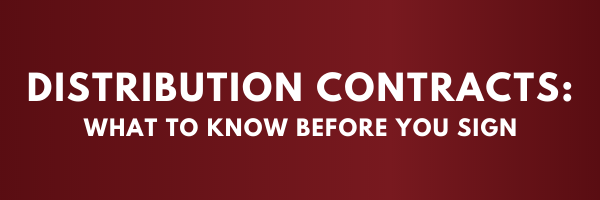|
The Brewers Association (BA) has released a new resource developed by the safety subcommittee. Best Management Practice for Surviving an OSHA Inspection provides helpful information for understanding the process of an on-site inspection by the Occupational Safety and Health Administration (OSHA), or an OSHA-Approved State Plan.
The guidelines are designed to lead breweries toward developing a safety program and standard operating procedures (SOPs) that ensure a healthy and safe work environment. The document outlines the role of the brewery representative, a brewery’s rights and responsibilities and includes FAQs related to OSHA regulations and inspections. “The most basic responsibility of any employer is to provide a workplace free from serious recognized hazards and comply with the standards, rules and regulations issued under the OSH Act,” adds Matt Stinchfield, the BA’s Safety Ambassador. “Preparing for an OSHA inspection will also elevate your brewery to a higher level of safety awareness and improve worker wellbeing.” The BA’s safety subcommittee developed this resource in direct response to the concerns of member breweries large and small. - via Brewers Association
1 Comment
You have a lot of responsibilities running a brewery and have to wear many different hats. Sometimes, keeping safety in mind and reducing risk to the brewery and its employees can go by the wayside. To help, our brewery insurance specialists here at Regnier Insurance put together a free Safety Resources & Best Practices Powerpoint for Breweries which you can download for FREE below (Click Here to Download).
For the easiest, quickest, & most enjoyable insurance quote you've ever experienced, click below: Original Source: Craft Brewing Business (Written By Chris Crowell)
The fight for quality beer marches on. Craft Brewing Business recently reached out to a couple established craft breweries, including Texas's own Real Ale Brewing (as well as Colorado's Left Hand Brewing) to hear about the composition of their quality assurance (QA) programs. Maybe there is a task or two you’ve been overlooking in your own operation. Real Ale Brewing Located in Texas, Real Ale Brewing is in its 19th year and produces around 65,000 to 70,000 barrels (bbls) per year, with all of its distribution contained inside the state of Texas. Thomas Erwin is the brewery’s lab specialist. Here is everything he identified under Real Ale’s QA program: Hourly
When Erwin says they perform a “full micro” on all batches, he is looking for anaerobic and aerobic plate counts, sacchromyces wild yeast plate counts and non-sacchromyces wild yeast plate counts. These tests can really save the day. “We once had the booster heater for the filler go out and therefore the pasteurization of the filler was not at the correct temperature,” Erwin said. “We had already run 600 cases or more by the time we noticed it. The micro revealed a small level of anaerobic contamination so the entire run pre re-pasteurization was held and dumped.” What should you be doing? Erwin believes a small brewery should be able to handle everything in that list. The only processes that carry a real price tag are the IBU, SRM and ATP equipment. If he had to boil that list down to the musts: Package headspace air is really important. Erwin said the constant and intensive monitoring of headspace air and total package oxygen has been maybe their biggest lifesaver. Real Ale checks it with a headspace air tester, which run around $2,000 and are inexpensive to maintain and use. Micro sampling on fermenters, brite tanks and packaged product are also fairly cheap to perform, but good aseptic technique and sterile containers are a must. Sensory panels will require some work up front in terms of training, but after that they cost very little, and they can provide some extremely important data. Breweries cannot just go by taste off the line as the taste could possibly fall apart once the beer is out in the world. “Quality assurance is a brewery’s best ‘insurance policy,’” Erwin said. “A lot of QA tasks are very cheap and just require a clean space and someone with some time. Of course, a small brewery shouldn’t run out and jump into gas chromatography and total package analyzers, but they should spend enough so that they can really trust the data they get from a QA program.” CLICK HERE TO READ THE FULL CRAFT BREWING BUSINESS ARTICLE The Craft Brewer's Guild Annual Meeting is THIS weekend @ 8th Wonder Brewing & Saint Arnold Brewery in Houston. As Guild Allied Trade Members as well as sponsors of the event, we just wanted to let you know that we look forward to meeting all of you & are excited about the event! If you have any brewery insurance related questions, or if you just wanna chat, feel free to stop on by our booth. We will be giving away the above framed Texas Brewery 24" x 36" print (See if you can find your brewery!), so stop by our booth, leave a business card, and enter to win! See y'all this weekend!
CHEERS! by Abby Quillen (originally found on www.custommade.com) Accidents Happen. Here's How You Report Them.
Accidents happen. They are unavoidable. When they do occur, it is important to document the facts, circumstances and get contact information from witnesses whenever an employee or customer is injured at your brewery. It is also important to establish reporting procedures and notification guidelines to alert the manager or owner. The procedures should include follow up contact with the injured person. We've created an Accident Reporting Form for Wineries & Breweries to utilize, which you can download for FREE below. Interested in potential savings? How about new coverages? Request a FREE insurance quote, simply by completing our Quote Application Forms located below (Shouldn't take more than 15 min to complete) and e-mailing it to [email protected]. We look forward to working with you. Winery Insurance Quote Application Form Brewery Insurance Quote Application Form Workers' Compensation Agreement for Independent Contractors & Interns
During the holidays, many wineries & breweries utilize independent contractors (Form 1099) and interns to help with special events. If these individuals are paid or compensated in any way (i.e. financial, food or product), the owner has responsibilities to these individuals. One of the most misunderstood coverage is workers’ compensation. What if they have an accident? Can you as an owner be held liable for injuries to these individuals? The answer is “YES!” Here are some examples to consider:
It is important to establish the terms of all relationships up front. Having independent contractors and interns sign an agreement stating you will not provide them with Workers' Comp coverage will mitigate potential problems for you and the business. We've developed an Agreement Form for Independent Contractors and one for Interns, which you can download below. If you have any questions, don't hesitate to contact us at [email protected] or at 512-448-9928. We found this wonderful article on distribution contracts for breweries over at www.craftbrewingbusiness.com written by Candace L. Moon of The Craft Beer Attorney, APC. We have re-blogged it for you below. Enjoy.
Original Source: Craft Brewing Business Contracts are a fact of life. You sign them as an individual and that will hold true for your brewery the more you grow and expand. That being said, when it comes time to distribute, there are unique considerations required before signing the dotted line. Distribution contracts have a special set of laws that govern what can and cannot be agreed to, the history of which can be traced to anti-monopolistic policies. Many brewers, unaware of the special waters they are treading, treat distribution contracts like any other contract. Unsurprisingly, distributors are also frequently as uninformed about what these special rules are, and it shows in the contracts they draft. This is a recipe for disaster down the road as breweries wish to adjust the distribution plans for their growing business. Ending a contractThe most pressing issue usually is how breweries can end a contract with a distributor. A number of states have adopted cause-only rules. At the most basic level, the rule says you cannot end a contractual relationship with a distributor without “good cause.” Some states go even further and define what good cause means, while others allow individual parties to contract those meanings for themselves. So what happens if you terminate a distribution contract without good cause? Under most state laws, the terminated distributor must be paid the fair market value of the distribution rights in relation to your particular brewery, including any goodwill that accompanies the relationship.If you are allowed to define what good cause can mean in the contract, then just about anything you want (and can convince the other party to agree to) is fair game. Simply write out a list of things that will constitute good cause in the contract, and that list will be binding. If you do not define good cause, then the fallback standard is usually impractically high, and your relationship with that distributor is generally not over until the distributor decides that it is. Popular choices when defining good cause include: failure to pay within a certain time period, failure to maintain minimum orders, and failure to meet minimum shipping and handling requirements. As an aside, it is worth noting that, as with all contracts, there are limits to what can be agreed upon. For example, every contract drafted within the United States is subject to the covenant of good faith and fair dealing. While the discussion of what that entails could be an entire article in itself, for now, know that everyone is legally bound to act honestly and fairly in his or her contracts. In a similar vein, some of the states that allow parties to define good cause for themselves restrict what can be agreed to even more tightly than good faith and fair dealing. A handful of states require that good cause must be limited only to what is considered commercially reasonable. Commercially reasonable is a moving target, but courts have looked to a variety of factors in the past when attempting to pin it down. One of the more popular approaches is consistency is contracting. In other words, your contract in one state might be compared to your other distribution contracts to see if the standards being applied are reasonably consistent. If you manage to negotiate better-than-usual terms in your distribution contracts, courts examining the contract may want to see that these terms were achieved in exchange for something of equal value. A matter of quid pro quo, so to speak. Some states go so far as to mandate that similar distributors be treated similarly; this is generally referred to as anti-discrimination or non-discrimination. Terminating without good causeSo what happens if you terminate a distribution contract without good cause? Under most state laws, the terminated distributor must be paid the fair market value of the distribution rights in relation to your particular brewery, including any goodwill that accompanies the relationship. Like good cause, some states dictate what is the fair market value and some allow the parties to decide for themselves. Regardless, the means of calculating this fair market value needs to be spelled out in the distribution contract so that there is no confusion (or litigation) later on. When allowed to define the value, different breweries have used different methods. One of the most popular approaches involves matching the profit for a certain number of months preceding the termination with a multiplier. How many months will of course vary based on the size of your brewery and the extent of distribution. Explicitly negotiate this with the distributor and include it, labeled as such, within the contract. Other special considerations include specific notice requirements when attempting to terminate the contract, the distributor’s right to cure any deficiency in the relationship, exclusivity requirements for particular territories, and anti-waiver provisions. Anti-waiver provisions accomplish several things. First, they void any out-of-state forum selection clause that the distribution contract has. Generally, parties can choose the law of any state they like regardless of where the parties are located or where the transactions are taking place. Certain states have decided that the regulation of alcohol distribution within its borders is so important that its own laws will govern irrespective of what the parties would prefer. Hence, distribution contracts in California, for example, will always be governed by California law, even if the parties agreed to use Colorado law instead. Note that many distributors are unaware of these rules and actually purport to waive this particular rule (sometimes explicitly, sometimes accidentally). Just know that, regardless of what the contract says when you sign it, if you are in an anti-waiver state, then that state’s laws will apply. Not every provision mentioned above applies in every state. Some states have very simple distribution laws; some states have very complex distribution laws. This is an area fraught with potential litigation pitfalls, so it is important to consult an attorney before signing the contract. You may very well be spending the rest of your brewery’s life with this distribution company, for better or for worse, so be sure to put all of your cards on the table before you walk down the aisle together in commercial matrimony. Candace L. Moon is a San Diego-based attorney who has spent the last four years dedicating her law practice to the craft beer industry. She has worked with over 100 craft breweries and craft breweries-in-planning nationwide, handling business entity formation, alcoholic beverage law, contract review, trademark law, as well as other legal needs. Her clients range from Green Flash and Drake’s to Jamil Zainasheff’s Heretic Brewing. Moon’s undergraduate degree is from the University of Virginia and her juris doctorate is from Thomas Jefferson School of Law in San Diego, Calif. She has been a member of the California State Bar since 2008 and the Brewer’s Association since 2009. Contact her at [email protected]; her website, www.CraftBeerAttorney.com; or her Twitter account,CraftBeerAttny. Original Source - Beverage Trade Network
BTN writes about the planning required by wineries, breweries and other brand owners to make their participation in Beer, Spirits or Wine Trade Show count. See helpful info below: How to Plan For Your Trade Show and Making Your Trade Show Display Stand Out 1.) Prepare, prepare, prepare! Get your marketing companies involved upfront and hold a planning meeting. It helps to have ideas from managers that have been to a lot of Trade Shows. 2.) Register and select a high traffic (open) space—it helps if you get registered very early on and attend the Show the year before so you know “the lay of the land.” 3.) Be sure to find out the size of the trade show display table you will have, whether there is wall space for your company sign, if there are electrical outlets available, and anything else that may or may not be included (i.e. a table cloth, etc.). Set a budget and stick with it—you can adjust for expenditures next year! 4.) Bring your own tablecloth, be sure to get one that complements your display and represents your company’s image and color scheme (without being overpowering). Even if a tablecloth is supplied, bring your own or something to add some depth to your table (i.e. a table runner). Your table will definitely stand out in a crowd. 5.) Set up a stand-alone presentation board. On the board, you can show how clients can benefit by using your services. Be creative and make it stand out. Include pictures, if possible, and be sure your company name and logo are more than obvious. 6.) If there is wall space, but your budget is minimal, use your trusty desktop publishing software to create a template of your company name. Use the template, along with bristle board, cardboard, or foam core to make a sign that you can put up on the wall behind your trade show display. 7.) Arrange your beverage brands or wine trade show display table in levels. Put the larger items at the rear, shorter items in front of those, and even shorter items in front of those. If you’re displaying beer, build a small bar so the patrons can sit at it and feel comfortable. If you’re displaying wine or spirits, make a small lounge with comfy couches. The customers will stick around longer if they feel comfortable in your booth. 8.) Show off your Brewery or your Winery--Develop a PowerPoint presentation or streaming video to display on your table. You can make it on your desktop computer and transfer it to a laptop, which you can rent or borrow if you don’t already have one. Your visitors will find this visually appealing and it will draw in their attention. Drawing Attention To Your Trade Show Display 9.) Draw attention to your booth: Have plenty of trade show logoed giveaways, such as business cards, brochures, pens, magnets, and anything else that has your company name and/or logo on it. Most people who attend trade shows are expecting to take home some goodies. Offer plastic bags with your brand name on them. And be sure to use display racks for showing your flyers, specials, brochures, and such. 10.) Offer something a little different as a trade show giveaway… FOOD. I displayed at the "NBWA" trade show in Las Vegas and included a basket of pretzels with horseradish mustard on my table—a great compliment for beer! They were a big hit; I wish I had bought more. If you can, package your food in a way that will allow you to have your company contact information on it. 11.) Offer Gift Certificates for some of your services as a trade show giveaway. There’s nothing better than getting a deal and when they “cash in” their certificate, they will see how valuable your services are and will come back for more. 12.) Have a drawing for a Grand Prize—get something nice (Logoed bicycle, motor scooter, decorated can for Parades, or blow up wine bottle are just a few ideas). Offer a prize that in some way complements your business if possible, and appeals to anyone. Have visitors and entrants sign a guestbook, fill in a ticket, or drop their business cards into a fish bowl or gift bag. The great thing about this trade show giveaway is that you can then use this information at a later date to make a follow up contact. 13.) Have a portfolio of your work available as part of your trade show display. Print off some of your best beer or wine displays or contests, put them into plastic sheet protectors, and arrange them in a binder. Then lay out the binder where visitors can flip through the pages. 14.) Hire the right help! If the trade show will be on for an extended length of time, be sure to have assistance in manning your trade show booth so you can take a break. If you don’t have the option of having someone take over for a bit, be sure to put up a note that tells people how long you will be gone or when you will be back. 15.) Most importantly, be friendly and inviting. Say "Hi" to those that turn and look toward you or your trade show booth. Strike up a conversation and be sure to have a short introductory speech ready. And… have fun! |
WinStar
|
||||||
|
© 2024 WinStar Insurance Group
13625 Ronald W. Reagan Blvd. Building 3, Suite 100 Cedar Park, TX 78613 |
IMPORTANT NOTE: This Web site provides only a simplified description of coverages and is not a statement of contract. Coverage may not apply in all states. For complete details of coverages, conditions, limits and losses not covered, be sure to read the policy, including all endorsements, or prospectus, if applicable. Coverage CANNOT be bound, amended, or altered by leaving a message on, or relying upon, information in this Website or through E-Mail.
Licensed & doing business in the following states only: Texas, New Mexico, & Oklahoma
Licensed & doing business in the following states only: Texas, New Mexico, & Oklahoma











 RSS Feed
RSS Feed


